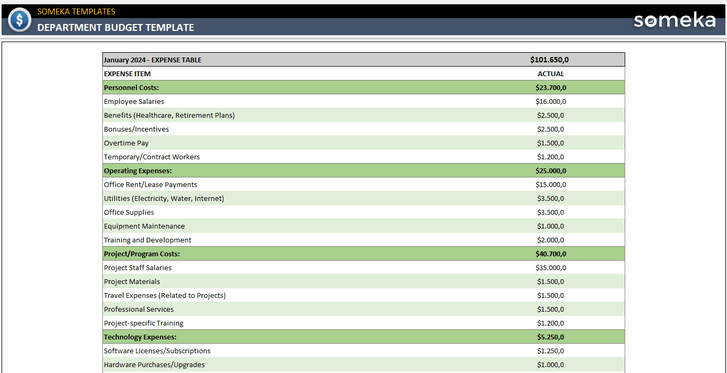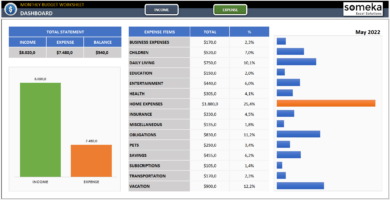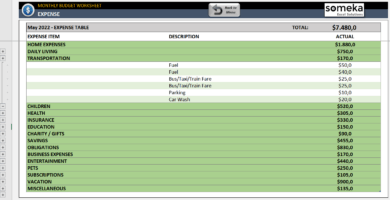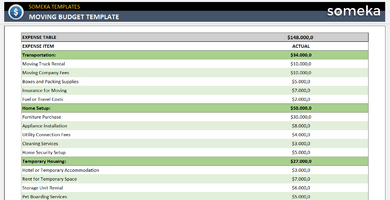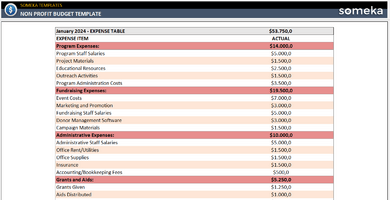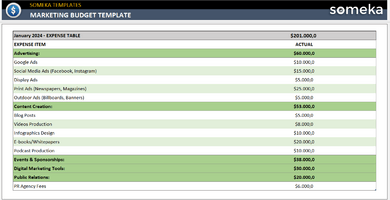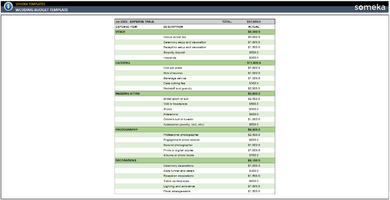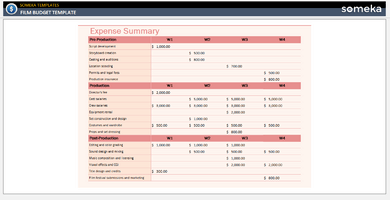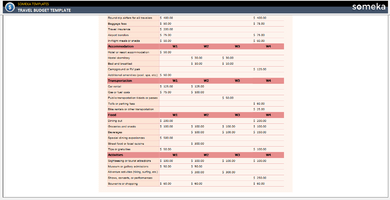Our Department Budget Template is crafted to cater to the unique budgeting requirements of different departments within an organization.
Whether for marketing, HR, IT, or operations, this Excel template serves as a central tool to plan, track, and analyze departmental expenditures and revenues.
Efficiently managing a department’s finances is crucial for organizational success.
Main Expense Categories for Department Budgeting
We can categorize department-based costs as follows:
- Personnel Costs: Employee salaries, benefits, bonuses, overtime pay
- Operating Expenses: Office rent, utilities, office supplies, equipment maintenance, training
- Project Costs: Staff, material, travel, service and training expenses
- Technology Costs: Software license, subscriptions, hardware procurement, IT support, website maintenance
- Marketing and Sales: Advertising, lead generation, sales commisions, other promotions
These are only some examples from the most common expense items. Thus, there may be various other cost types for departments according to business models.
What do you need for department budgets?
Firstly you need a segmented expense tracking. You should organize expenses into categories such as personnel costs, equipment, software, training, and office supplies. You should also make revenue sections, including internal chargebacks, services rendered, or product sales.
After making your budget, don’t forget to compare them with actual figures to monitor variances and adjust strategies accordingly. Thus, you can gain a high-level view of the department’s financial health, with insights into budget utilization and cost-saving opportunities.
Lastly, you should always be collaborative with your teammates to make sure that your forecast are realistic.
Key Features of Department Budget Template
- Editable files
- Print-ready formats
- Downloadable Excel and PDF
- No installation needed
This Department Budget Template in Excel is designed not just to track numbers but to empower department heads and finance teams to make informed, strategic decisions that align with organizational objectives.
